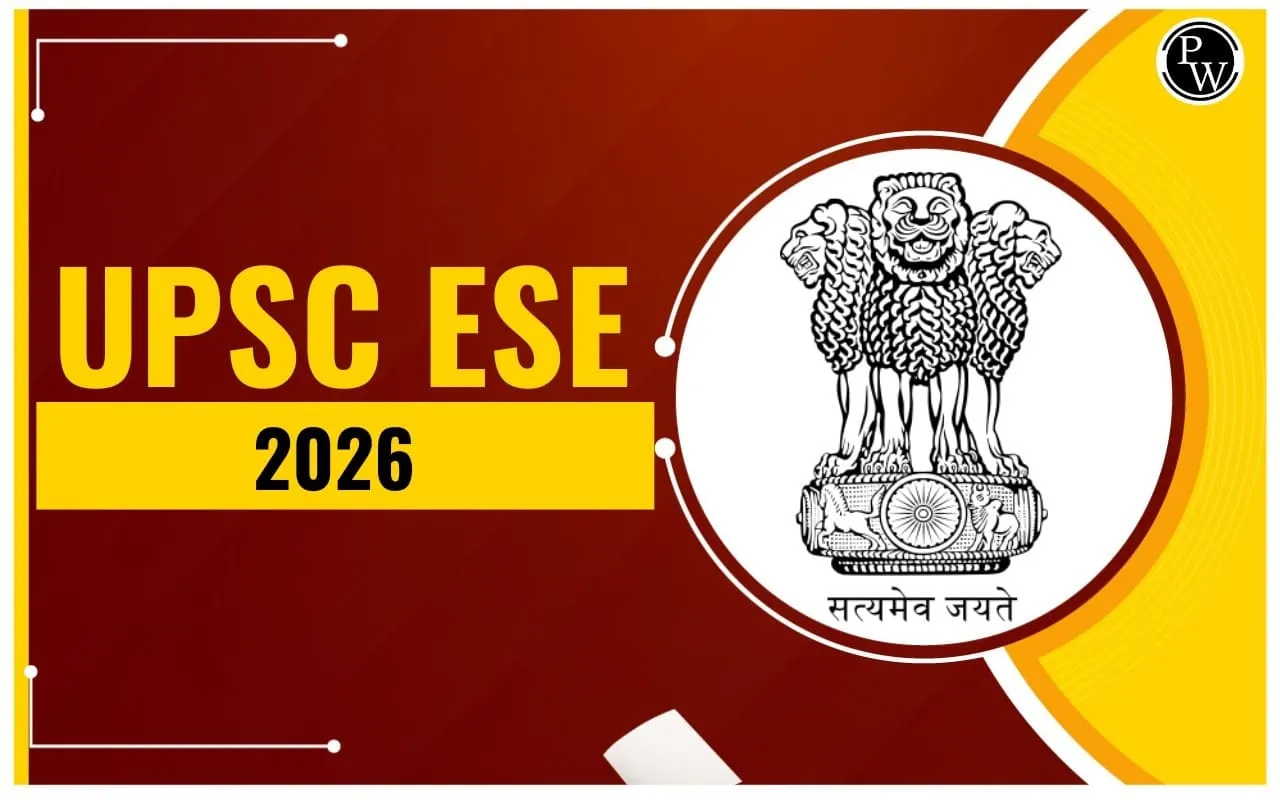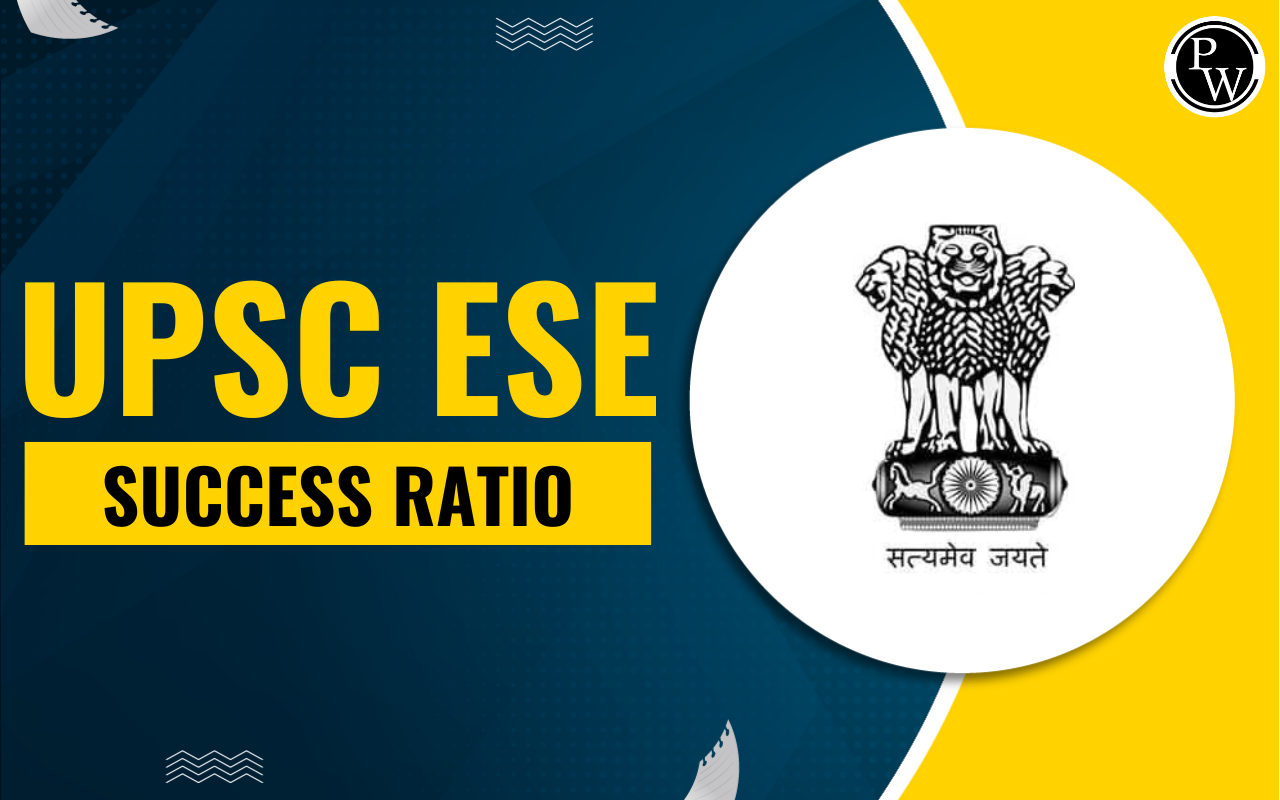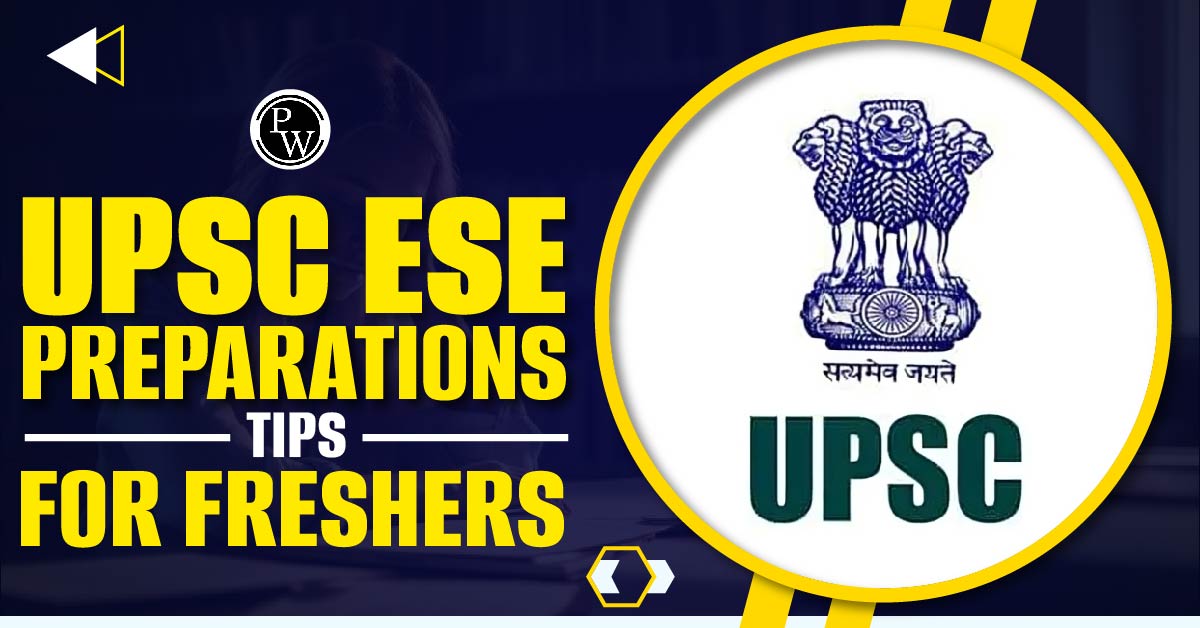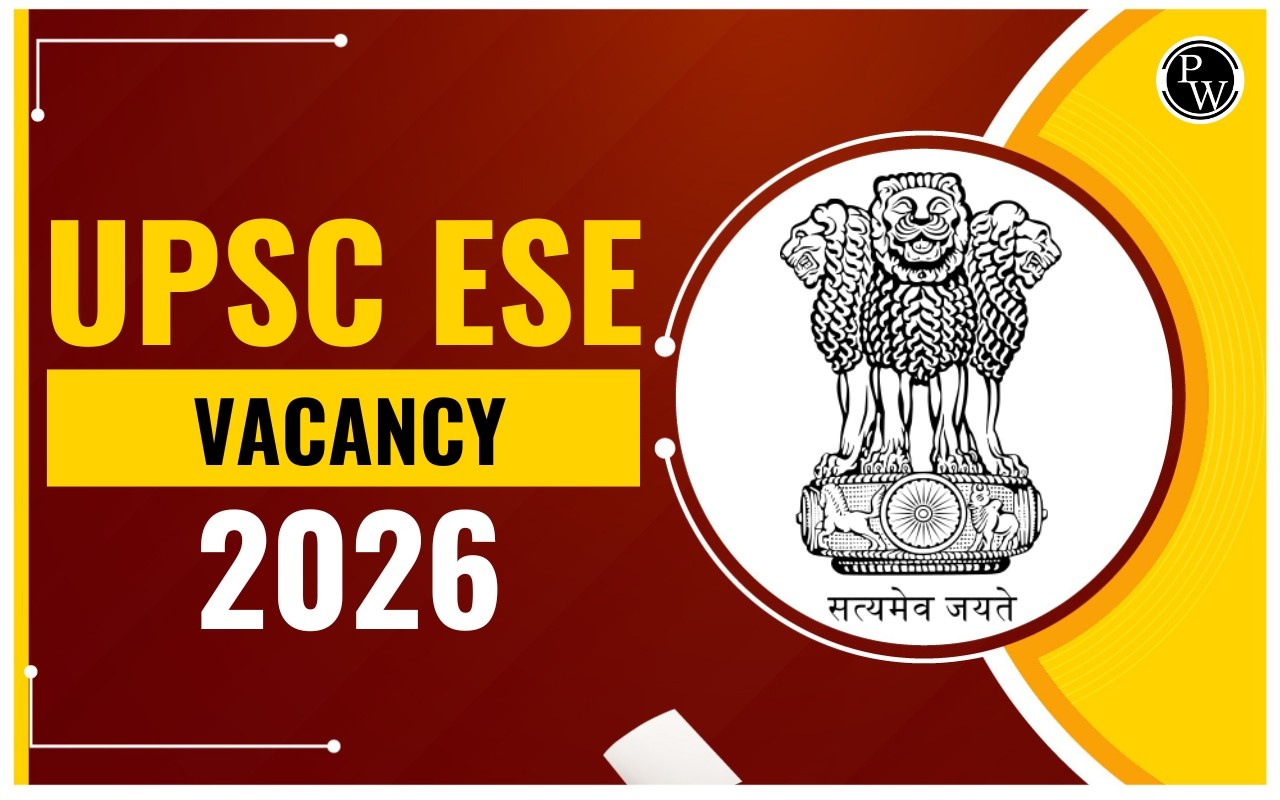
UPSC ESE Civil Engineering Syllabus 2026: The Union Public Service Commission will release the UPSC ESE Civil Engineering Syllabus 2026 alongside syllabus for other engineering branches. The syllabus is a crucial resource for aspirants to prepare for the exam in an effective way.
The UPSC ESE 2026 exam aims to fill vacancies for Grade A and B positions across various departments. The exam is conducted for four different engineering specializations, which include Civil, Mechanical, Electrical, and E&T.
Candidates aiming to crack the UPSC ESE Civil Exam 2026 with a good score must review the UPSC ESE Syllabus for the Civil Engineering branch. The syllabus outlines a comprehensive list of topics from which questions will be asked.
UPSC ESE Civil Engineering Syllabus 2026
The UPSC ESE exam comprises prelims, mains and personality tests to select Group A & B Officers in various departments. Aspirants planning to appear for this exam must ensure to align their studies with the latest UPSC ESE Civil Engineering Syllabus 2026. Continue reading to discover the UPSC ESE Civil Engineering Syllabus 2026 details, along with its exam pattern highlights.
UPSC ESE Civil Engineering Syllabus 2026 Overview
The UPSC ESE Civil Engineering Examination comprises two stages: prelims and mains. The preliminary exam includes questions from general studies and civil engineering disciplines, whereas the main exam focuses solely on subjects related to Civil Engineering. The comprehensive topic-wise UPSC ESE Civil Engineering Syllabus 2026 is detailed in the section below for the reference of aspirants.
UPSC ESE Civil Engineering Syllabus for General Studies and Engineering Aptitude
The UPSC ESE Civil Engineering Syllabus 2026 for General Studies and Engineering Aptitude covers information on relevant topics related to general studies or the general engineering field.
The questions in the final exam, encompassing all ten topics from the UPSC ESE Civil Engineering Syllabus 2026 for General Studies and Engineering Aptitude, are mentioned below. The marks assigned to each topic in the UPSC ESE Civil Engineering Exam 2026 could vary between 5 percent and 15 percent of the total marks.
The key topics of the UPSC ESE Civil Engineering Syllabus 2026 for General Studies and Engineering Aptitude are as follows:
- Current issues of national and international importance relating to social, economic, and industrial development
- Engineering Aptitude Focusing Logical Reasoning and Analytical Ability
- Engineering Mathematics and Numerical Analysis
- General Principles of Drawing, Design, and the Importance of Safety
- Standards and Quality Practices in Production, Construction, Maintenance and Services,
- The Basics of Project Management
- Ethics and Values in the Engineering Profession.
- The Basics of Material Science and Engineering
- Information and Communication Technologies (ICT)-based tools and their applications in engineering, such as e-government, networking, and technology-based education
- Basics of Energy and Environment: Environmental Pollution and Degradation, Conservation, Climate Change, and Environmental Impact Assessment
UPSC ESE Civil Engineering Syllabus for Prelims and Mains Exam
Both the preliminary and main examinations in the UPSC ESE Civil Engineering 2026 includes two papers, each worth 500 marks and 600 marks, respectively. Paper I of the preliminary will be dedicated to general studies and engineering aptitude, while the rest will be completely related to the core civil engineering topics.
The UPSC ESE Civil Engineering Syllabus 2026 for both the preliminary and mains examinations is presented in the table below.
UPSC ESE Civil Engineering Syllabus for Paper I
The UPSC ESE Civil Engineering Syllabus 2026 for Paper I includes six vital topics, which are Building Materials, Solid Mechanics, Structural Analysis, Design of Steel Structures, Design of Concrete and Masonry Structures, and Construction Practice, Planning and Management.
Find the detailed UPSC ESE Civil Engineering Syllabus 2026 for Paper I in the below-outlined table.
|
UPSC ESE Civil Engineering Syllabus 2026 for Paper I |
||
| Sl. No. | Topics | Sub-Topics |
| 1. | Building Materials | Stone, Lime, Glass, Plastics, Steel, FRP, Ceramics, Aluminum, Fly Ash, Basic Admixtures, Timber, Bricks and Aggregates: Classification, properties and selection criteria; Cement: Types, Composition, Properties, Uses, Specifications and various Tests; Lime and Cement Mortars and Concrete: Properties and various Tests; Design of Concrete Mixes: Proportioning of Aggregates and Methods of Mix Design. |
| 2. | Solid Mechanics | Elastic constants, Stress, plane stress, Strains, plane strain, Mohr’s circle of stress and strain, Elastic theories of failure, Principal Stresses, Bending, Shear and Torsion. |
| 3. | Structural Analysis | Basics of strength of materials, Types of stresses and strains, Bending moments and shear force, concept of bending and shear stresses; Analysis of determinate and indeterminate structures; Trusses, beams, and plane frames; Rolling loads, Influence Lines, Unit load methods, and other methods; Free and Forced vibrations of single degree and multi degree freedom systems; Suspended Cables; Concepts and use of Computer Aided Design. |
| 4. | Design of Steel Structures | Principles of Working Stress methods, Design of tension and compression members, Design of beams and beam column connections, built-up sections, Girders, Industrial roofs, Principles of ultimate load design. |
| 5. | Design of Concrete and Masonry Structures | Limit state design for bending, shear, axial compression and combined forces; Design of beams, Slabs, liners, Foundations, Retaining walls, Tanks, and staircases; Principles of pre-stressed concrete design, including materials and methods; Earthquake resistant design of structures; design of masonry structures. |
| 6. | Construction Practice, Planning and Management | Construction planning, Equipment, Site investigation and management, including Estimation with latest project management tools and network analysis for different Types of works; Analysis of Rates of various types of works; Tendering Process and Contract Management, Quality Control, Productivity, Operation Cost, Land Acquisition, and Labor Safety and Welfare. |
UPSC ESE Civil Engineering Syllabus for Paper II
The UPSC ESE Civil Engineering Syllabus 2026 for Paper II covers topics such as Flow of Fluids, Hydraulic Machines and Hydro Power, Hydrology and Water Resources Engineering, Environmental Engineering, Geo-technical Engineering and Foundation Engineering, Surveying and Geology, and Transportation Engineering.
Find the detailed UPSC ESE Civil Engineering Syllabus 2026 for Paper II in the below-outlined table.
|
UPSC ESE Civil Engineering Syllabus 2026 for Paper II |
||
| Sl. No. | Topics | Sub-Topics |
| 1. | Flow of Fluids, Hydraulic Machines and Hydro Power | (a) Fluid Mechanics, Open Channel Flow, and Pipe Flow: Fluid Properties; Dimensional Analysis and Modeling; Fluid Dynamics, including flow kinematics and measurements; Flow Net; viscosity; boundary layer and control; drag and lift; principles in open channel flow; flow controls. Hydraulic jump; surges; pipe networks. (b) Hydraulic Machines and Hydro Power: Various pumps, air vessels, hydraulic turbines—types, classifications and performance parameters; power house—classification and layout; storage; pondage; control of supply. |
| 2. | Hydrology and Water Resources Engineering | Hydrological cycle, ground water hydrology, well hydrology and related data analysis; streams and their gauging; river morphology; floods, drought and their management and capacity of reservoirs. Water Resources Engineering: Multipurpose Uses of Water, River basins and Their Potential; Irrigation systems; water demand assessment; resources—storage and their yields Water logging, canal and drainage design, gravity dams, falls, weirs, energy dissipators, barrage distribution works, cross-drainage works and head-works and their design Concepts in canal design, construction and maintenance; river training; measurement and analysis of rainfall |
| 3. | Environmental Engineering | (a) Water Supply Engineering: Sources, estimation, quality standards and testing of water and its treatment; Rural, Institutional and industrial water supply; Physical, chemical and biological characteristics and sources of water; Pollutants in water and their effects; Estimation of water demand; drinking water standards; water treatment plants; and water distribution networks (b) Waste Water Engineering: Planning and design of domestic waste water, sewage collection and disposal, and plumbing systems Components and layout of the sewerage system; Planning and design of domestic waste water disposal systems; sludge management, including treatment, disposal and re-use of treated effluents; industrial waste waters and effluent treatment plants, including institutional and industrial sewage management (c) Solid Waste Management: Sources and classification of solid wastes, along with the planning and design of its management system, disposal system, beneficial aspects of waste, and utilization by civil engineers (d) Air, Noise Pollution and Ecology: Concepts and General Methodology |
| 4. | Geo-technical Engineering and Foundation Engineering | (a) Geo-technical Engineering: Soil exploration: planning and methods; properties of soil; classification; various tests and interrelationships; permeability and seepage; compressibility; consolidation and shearing resistance; earth pressure theories; and stress distribution in soil; Properties and uses of geosynthetics (b) Foundation Engineering: Types of foundations and selection criteria; bearing capacity; settlement analysis; design and testing of shallow and deep foundations; slope stability analysis; earthen embankments; dams and earth retaining structures: types, analysis and design; principles of ground modifications |
| 5. | Surveying and Geology | (a) Surveying: Classification of surveys, various methodologies, instruments and analysis of measurement of distances, elevation and directions; field astronomy; global positioning system; Map preparation; photogrammetry; remote sensing concepts; Survey layout for culverts, canals, bridges, road/railway alignment and buildings; setting out of curves. (b) Geology: Basic knowledge of engineering geology and its application in projects |
| 6. | Transportation Engineering | (a) Highways: Planning and construction methodology, alignment, and geometric design; traffic surveys and controls; principles of flexible and rigid pavement design (b) Tunneling: Alignment, methods of construction, disposal of muck, drainage, lighting, and ventilation. (c) Railway Systems: Terminology, Planning, Designs, and Maintenance Practices; Track Modernization (d) Harbors: Terminology, layouts, and planning; airports layout, planning and design |
UPSC ESE Civil Engineering Exam Pattern 2026
Having knowledge of the UPSC ESE Exam Pattern 2026 for Civil Engineering is essential for comprehending the exam's structure and approach, as the exam pattern contains information regarding the topics that will be covered, the kinds of questions that arise, and the overall scoring structure. To gain an in-depth understanding of the UPSC ESE Civil Engineering Exam Pattern 2026, review the table given below:
|
UPSC ESE Civil Engineering Exam Pattern 2026 |
|
| Mode of Examination | Offline |
| Stage I: Preliminary Exam (Objective Type Papers) | |
| Paper-I: General Studies and Engineering Aptitude Paper | |
| Total Marks | 200 Marks |
| Duration of Exam | 2 Hours |
| Paper-II: Civil Engineering Discipline, Specific Paper | |
| Total Marks | 300 Marks |
| Duration of Exam | 3 Hours |
| Total Marks for Stage I | 500 Marks |
| Total Time Duration for Stage I | 5 Hours |
| Stage II: Mains Examination (Conventional Type) | |
| Paper-I: Civil Engineering Discipline, Specific Paper I | |
| Total Marks | 300 Marks |
| Duration of Exam | 3 Hours |
| Paper-II: Civil Engineering Discipline, Specific Paper II | |
| Total Marks | 300 Marks |
| Duration of Exam | 3 Hours |
| Total Marks for Stage II | 600 Marks |
| Total Time Duration for Stage II | 6 Hours |
UPSC ESE Civil Engineering Syllabus 2026 - Preparation Tips
The UPSC ESE Civil Engineering Syllabus 2026 not only covers the main engineering disciplines, also encompasses general studies and engineering aptitude. As a result, candidates need a well-planned approach to ensure complete coverage. Explore the detailed preparation strategy for the UPSC ESE Exam 2026 below.
- Comprehend the UPSC ESE Civil Syllabus - It is recommended that applicants start their study by becoming well-versed in all aspects of the UPSC ESE Civil Engineering Syllabus 2026. Divide the syllabus into topics and subjects to create an effective study schedule.
- Create a Focused Study Plan - Develop a study timetable to cover the entire syllabus on time. Organize subjects into priority lists according to their relevance, weightage of marks, and level of difficulty. Allocate specific time slots for each subject, considering both strengths and areas that require more attention. Aspirants can effectively cover the entire UPSC ESE Civil Engineering Syllabus without feeling overwhelmed if they follow a structured study plan.
- Take Regular Tests - It is highly advised that aspirants incorporate regular test series into their study routine to simulate the actual exam environment. Examine the test series results to determine areas of strength and weakness.
Excel your UPSC ESE 2026 preparation journey with PW’s UPSC ESE Online Coaching. The Physics Wallah offers well-structured study material, mock tests, e-books, and more to scale up the aspirant's preparation.









